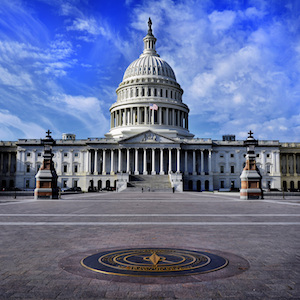Collective investment trusts (CITs) are a greater focus of attention and activity in the wake of SECURE 2.0, as a recent Congressional Research Service (CRS) report highlights.
In “Pensions and Individual Retirement Accounts (IRAs): Investment Issues,” the CRS provides an overview of pension investment issues relevant to both public and private-sector retirement plans. It also identifies and synthesizes key retirement plan issues that have received congressional scrutiny and action. CITs are among the matters it addresses that are relevant to private-sector coverage.
CITs, pooled investment funds maintained by banks or trust companies available only to certain qualified retirement plans, are an example of a group trust, the CRS notes. They are an investment option for 401(k)s, it continues, but until the enactment of the SECURE 2.0 Act of 2022, were not an option for 403(b)s.
Annuity contracts provided by insurance companies and custodial accounts invested only in mutual funds registered with the Securities and Exchange Commission (SEC) had been the only investment options for 403(b)s, the CRS observes. Assets of 403(b) custodial accounts could not be commingled in group trusts with assets other than those of regulated investment companies.
Hill Activity
“Over the years, Congress has tried to harmonize some of the rules that cover 401(k) and 403(b) plans,” says the report.
SECURE 2.0. Congress took a more concrete step with a provision in SECURE 2.0; specifically, Section 128 of that measure amends the Internal Revenue Code (IRC) to allow 403(b)s to invest in group trusts such as CITs. Among the changes the provision makes, says the CRS, is that it modifies the types of contributions 403(b) participants may withdraw in hardship distributions to mirror the rules for 401(k) plan hardship distributions.
However, says the CRS, while SECURE 2.0 amended the IRC, it did not make corresponding amendments to securities laws—the Securities Act of 1933, the Securities Exchange Act of 1934, and the Investment Company Act of 1940. Such amendments, it said, are necessary in order for 403(b) plans to participate in CITs.
H.R. 3063. Congress has taken action to address SECURE 2.0’s failure to amend securities law, the CRS indicates; for instance, in H.R. 3063, the Retirement Fairness for Charities and Educational Institutions Act. Says the bill of the rationale behind it,
“There are close similarities between 403(b) plans and 401(k) plans, except for the fact that 403(b) plans may only be maintained by non-profit charities or public educational institutions. While 403(b) plans were historically considered retail arrangements directly marketed to individual employees,these plans have shifted to employer-provided arrangements comparable to 401(k) plans. Unfortunately, outdated restrictions in the Internal Revenue Code and federal securities laws prohibit 403(b) plans from having access to the same low-cost investments as 401(k) plans.”
Rep. Frank Lucas (R-OK) introduced the bill on May 2, 2023. It would amend the Securities Exchange Act of 1934 to allow 403(b)s to invest in CITs. It also would permit 403(b) plans to invest in non-registered variable annuities; that is, insurance separate accounts, which are investment vehicles made available through group annuity contracts that commingle assets from multiple retirement plans.
The House Financial Services Committee marked up the bill on May 24, but did not report it to the House until Dec. 12, 2023; no action has been taken yet.
H.R. 2799. On March 8, 2024, the House passed H.R. 2799, the Expanding Access to Capital Act of 2023, which included a provision that would allow CITs to be included as menu options in 403(b)s. The bill is now before the Senate Committee on Banking, Housing, and Urban Affairs.
- Log in to post comments
